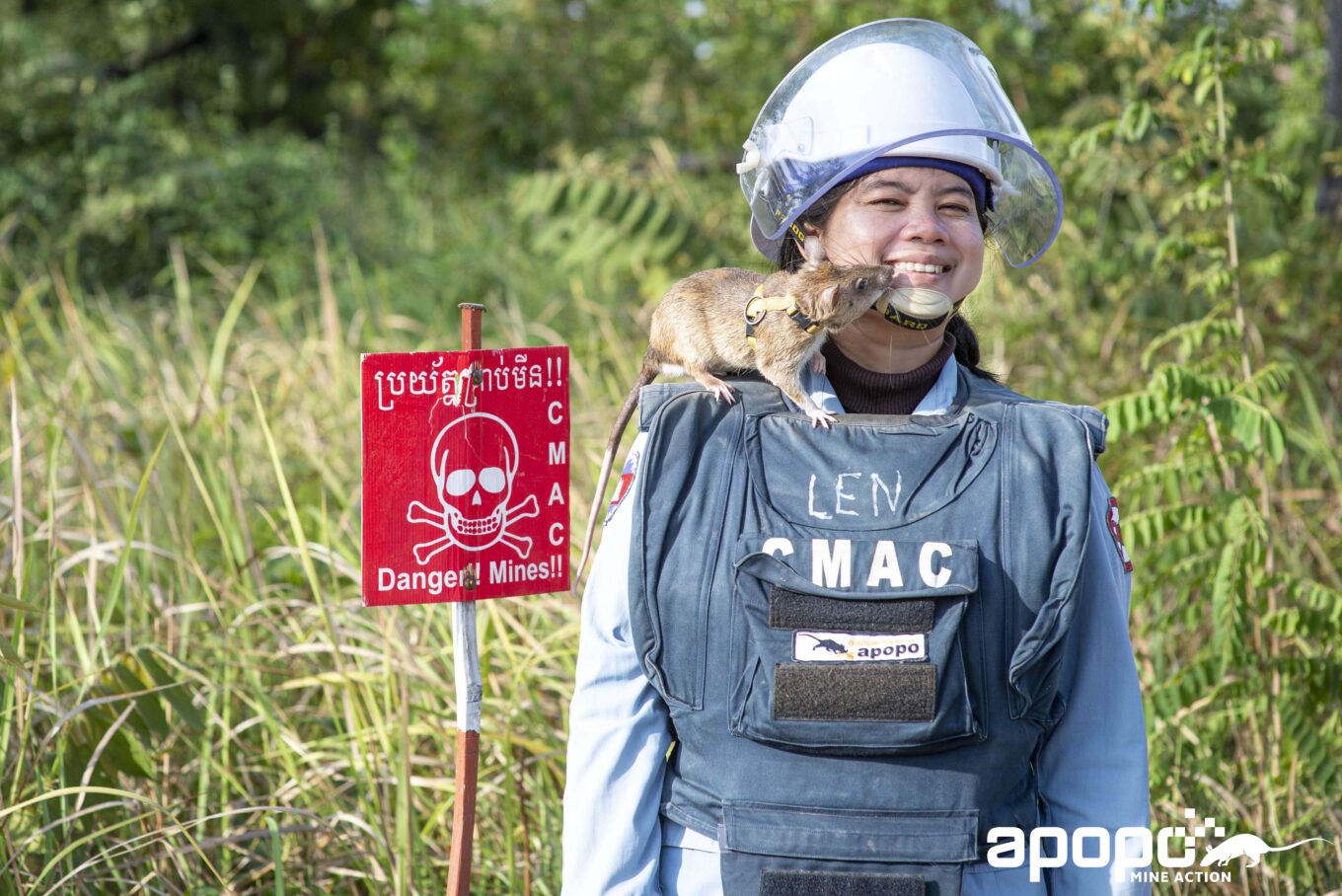Rats are now being trained to wear backpacks that can be tracked with a location sensor and microphone, which allows them to help humans locate survivors trapped in earthquake rubble.
This comes as a part of a unique scientific project called “Hero Rats”.
Newsweek reports that Dr. Donna Kean, 33, a research scientist from Glasgow, Scotland is working on an innovative project. The rodents are being trained to wear tiny backpacks outfitted with microphones and respond to beeping sounds. Once in the earthquake rubble, they'll collect data and send it back to us.
According to PEOPLE, “So far, seven rats went through training and managed to learn the tasks in only two weeks.”
To train rats to find hidden microphones in difficult environments, the scientists simply made prototype backpacks with microphones into them. The rats learned quickly and happily ran through all of their tests.
They're creating a specialist backpack that will feature microphones, video equipment, and location trackers to make it easier for rescue teams to communicate with survivors in the event of an earthquake.
The Sociable Creatures
Dogs are known to be able to sense seismic waves, but rats were chosen for this reason. They are small, agile, and petite like a hatchback that’s not only affordable but also practical for any terrain.
Additionally, they can live off anything and survive highly-dangerous environments.
Dr. Kean currently resides in Morogoro, Tanzania, East Africa. He is working with the non-profit organization APOPO which established its Hero Rats program. The rats have been trained to detect landmines without injury and are proving to be more effective than landmine sniffing dogs or metal detectors.

Rats are very agile and have never set off a landmine. “This makes them perfect for use in disaster zones, says Dr. Kean.”
"HeroRats," as they're called, will go to Turkey, one of the most earthquake-prone areas on Earth. They'll be assisting the search and rescue team, GAE. Thanks to their phenomenal sense of smell.
The 33-year-old Kean, who studied ecology at Strathclyde University and also holds a Ph.D. at Stirling University, was initially interested in primate behavior.
“But she was fascinated by how quickly rats can learn and be trained, and said it is a misconception that they are unhygienic,” said Kean according to Newsweek.
She goes on to describe them as "sociable” creatures and believes the work being done will save lives.
Kean added: "They are very trainable, the first stage is to train them to come back to base point - they respond to a beep. There is a misconception they are dirty and unhygienic. They are well looked after with us, they are sociable animals.”
"Rats would be able to get into small spaces to get to victims buried in the rubble. We have not been in a real situation yet, we have got a mock debris site. When we get the new backpacks we will be able to hear from where we are based and where the rat is, inside the debris. We have the potential to speak to victims through the rat,” Dr. Kean quoted as per Newsweek.
“The rodents are so agile, they are so good at moving through all kinds of different environments. They are perfect for search and rescue-type work. They can live off anything, “ she adds.
So far, 170 rats are trained in APOPO's lab and are being used in projects such as landmines and Tuberculosis detection. They hope they can be useful for other diseases like Brucellosis, a malady that infects cattle.
Dr. Kean said of her work with APOPO, "We hope it will save lives, the results are really promising."
Training the Squeakers
Based on past performance and breeding pairs, a rat is conceived, taking about five weeks. It takes another four or five weeks before they are socialized and weaned.
The Rats are gently carried by the APOPO team to introduce them to a variety of different stimuli. This prepares them for training and things they might come across during their work in detecting mines.
As per Times Now, “At 10 weeks old, they move onto basic clicker training which uses positive reinforcement to teach the rats that they will be rewarded by the sound of their clicker.”
After being exposed to an odor for a month, these "motivated" rats are trained to distinguish between smells - like the scent of TNT or TB-positive samples.
Once training is complete, the specialists will be deployed as mine detecting rats (MDR) or TB detection rats (TDR).
References
“//.” // - Wikipedia, https://twitter.com/donnaeilidhkean/status/1529797165387857921?ref_src=twsrc%5Etfw%7Ctwcamp%5Etweetembed%7Ctwterm%5E1529797165387857921%7Ctwgr%5E%7Ctwcon%5Es1_&ref_url=https%3A%2F%2Fwww.newsweek.com%2Ftrained-rats-sent-earthquake-debris-wearing-tiny-backpa. Accessed 6 June 2022. ; “Explained: How rats wearing backpacks with microphones are training to rescue earthquake survivors.” Times Now, 6 June 2022, https://www.timesnownews.com/viral/explained-how-rats-wearing-tiny-backpacks-with-microphones-are-training-to-rescue-earthquake-survivors-article-92029481. Accessed 6 June 2022.; “Hero Rats Project Training Rodents to Wear Tiny Backpacks and Help With Earthquake Rescues.” People, 3 June 2022, https://people.com/pets/hero-rat-project-training-rats-to-help-with-earthquake-rescues/. Accessed 6 June 2022. ; Kitanovska, Simona, et al. “Trained Rats to Be Sent Into Earthquake Debris Wearing Tiny Backpacks With Microphones.” Newsweek, 3 June 2022, https://www.newsweek.com/trained-rats-sent-earthquake-debris-wearing-tiny-backpacks-microphones-1712638. Accessed 6 June 2022.; “Rats Being Trained to Rescue Earthquake Survivors Wear Tiny Backpacks, Save Lives.” News18, 5 June 2022, https://www.news18.com/news/buzz/rats-being-trained-to-rescue-earthquake-survivors-wear-tiny-backpacks-save-lives-5313751.html. Accessed 6 June 2022.; Sukheja, Bhavya. “Trained Rats To Wear Backpacks With Microphones To Rescue Earthquake Survivors Buried In Debris.” NDTV.com, 5 June 2022, https://www.ndtv.com/world-news/trained-rats-to-wear-backpacks-with-microphones-to-rescue-earthquake-survivors-buried-in-debris-3040478. Accessed 6 June 2022.












